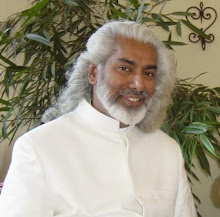A question asked more frequently then any other is why do Hindu gods and goddesses often have many arms?
I remember very clearly the situation when I was asked this question for the first time. I waited a bit, and directed the conversation to some general ground. Then I walked to a nearby motorized pump. I casually asked my friend about it and asked about some technical details. I read the engine label; it said “80 horsepower”. I asked my friend to explain to me what this meant. He answered, “It means the motor has the power of 80 horses.” So I opened the cap of the petrol tank and peered inside. “Where are all those horses” I asked. It took a while before my friend realized I had just answered his question about the many arms of deities. I had to explain it.
We symbolically say an engine has so much horse power. This doesn’t mean there are any horses in the engine. It means the engine can produce as much force as so many horses. In the same way a deity may be depicted with four, six, ten or even a thousand arms. Human beings think partly through analogy. The image of the deity is an analogy and a symbol. The arms represent the many ways and powers the divinity offers the humanity for comfort and support. And humans generally need an image to relate to. Most people can achieve an abstract understanding of the divine only through long and arduous spiritual practice. At the same time the image, the murti, is also truly the embodiment of the divine power. This is Advaita, non-dualism. The divinity is invoked, invited, into the murti through ritual and mantra. The rupa, form, has been ‘seen’ in ancient times by the rishis, the visionary sages who gave the doctrine to the humanity. The form of the god has been seen by the sages. Later it has been given shape by artists for the direction of humanity.
Monday, May 11, 2009
Subscribe to:
Post Comments (Atom)



No comments:
Post a Comment